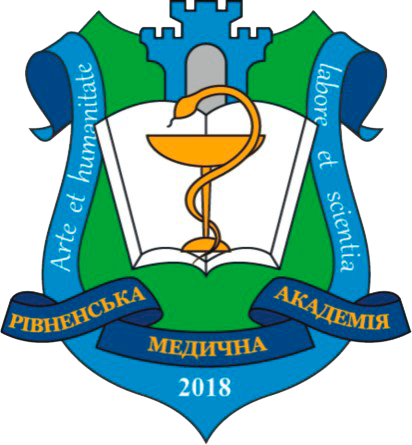PECULIARITIES OF CORRECTION OF GERIATRIC STATUS IN ELDERLY PATIENTS WITH SARCOPENIC OBESITY AND HIP OSTEOARTHRITIS
DOI:
https://doi.org/10.32782/health-2024.3.21Keywords:
physical therapy, sarcopenia, old age, gerontology and geriatrics, obesity, osteoarthritis, hipAbstract
The purpose of the study is to determine the impact of the physical therapy program on indicators of the geriatric status of elderly people with osteoarthritis of the hip, which occurs against the background of sarcopenic obesity. Methods. 68 elderly people with osteoarthritis of the hip and sarcopenic obesity and 36 of their healthy peers (control group) were examined. Representatives of the comparison group (33 people) corrected the signs of osteoarthritis according to the clinical guideline “Osteoarthrosis”. Representatives of the main group (35 people) were engaged in a physical therapy program for six months using therapeutic exercises, functional training, Proprioceptive Neuromuscular Facilitation, massage, kinesiological taping; course of shock wave therapy, nutrition correction, patient education. The effectiveness of the program was evaluated by the dynamics of the Geriatric Depression Scale, Senior Fitness Test, Fall efficacy scale, Health-related quality of life questionnaire specific to sarcopenia (за SarQoL). Results. The geriatric status of patients was characterized by psycho-emotional depression (according to the Geriatric Depression Scale), physical weakness, low flexibility when performing movements that imitate usual activities (according to the Senior Fitness Test), high risk of falling and fear of its occurrence (according to the Fall efficacy scale), low quality of life associated with sacropenia (according to SarQoL). The tested comprehensive program of physical therapy revealed an improvement in the geriatric status of patients due to improvement in the psycho-emotional state, physical qualities – increased strength, flexibility, reduced risk of falling, improved quality of life compared to the initial indicators and corresponding parameters of the comparison group according to the studied parameters (р<0.05). Patients who were rehabilitated according to a standard osteoarthrosis correction program showed statistically significantly worse results according to the studied indicators, which emphasizes the need to develop rehabilitation strategies from the perspective of gerontological needs. Conclusions. Elderly patients with osteoarthritis of the hip joints and sarcopenic obesity need the development of physical therapy programs taking into account and correcting the specifics of geriatric syndromes, which increases the overall effectiveness of rehabilitation.
References
Sanford A.M., Morley J.E., Berg-Weger M., et al. High prevalence of geriatric syndromes in older adults. PLoS One. 2020. № 15(6). Р. e0233857. doi:10.1371/journal.pone.0233857
Fernandes L.V., Paiva A.E.G., Silva A.C.B., et al. Prevalence of sarcopenia according to EWGSOP1 and EWGSOP2 in older adults and their associations with unfavorable health outcomes: a systematic review. Aging Clin Exp Res. 2022. № 34(3). Р. 505–514. doi:10.1007/s40520-021-01951-7
Cruz-Jentoft A.J., Bahat G., Bauer J., et al. Sarcopenia: revised European consensus on definition and diagnosis. Age Ageing. 2019. № 48(1). Р. 16–31. doi:10.1093/ageing/afy169.
Hunter D.J., Bierma-Zeinstra S. Osteoarthritis. Lancet. 2019. № 393(10182). Р. 1745–1759. https://doi.org/10.1016/S0140-6736(19)30417-9
Aravitska M.H., Saienko O.V. The influence of physical therapy on indicators of locomotive syndrome in elderly persons with osteoarthritis of the knee and obesity. Clinical and Preventive Medicine. 2023. 4(26). 6–13. DOI: https://doi.org/10.31612/2616-4868.4(26).2023.01
Katz J.N., Arant K.R., Loeser R.F. Diagnosis and Treatment of Hip and Knee Osteoarthritis: A Review. JAMA. 2021. № 325(6). Р. 568–578. doi:10.1001/jama.2020.22171
Roubenoff R. Sarcopenic obesity: the confluence of two epidemics. Obes Res. 2004. № 12(6). Р. 887–888. DOI: 10.1038/oby.2004.107.
Jung S., Lee Y., Kim K., Park S. Association of the dietary inflammatory index with sarcopenic obesity and frailty in older adults. BMC Geriatr. 2024. № 24(1). Р. 654. doi:10.1186/s12877-024-05239-z
Yuan J, Wang D, Zhang Y, Dou Q. Genetically predicted obesity and risk of hip osteoarthritis. Eat Weight Disord. 2023;28(1):11. doi:10.1007/s40519-023-01538-3
Ramirez E., Salas R., Bouzas C., Pastor R., Tur J.A. Comparison between Original and Reviewed Consensus of European Working Group on Sarcopenia in Older People: A Probabilistic Cross-Sectional Survey among Community-Dwelling Older People. Gerontology. 2022. № 68(8). Р. 869–876. doi:10.1159/000519304
Magtouf E., Chortane S.G., Chortane O.G, et al. Influence of Concurrent Exercise Training on Ankle Muscle Activation during Static and Proactive Postural Control on Older Adults with Sarcopenic Obesity: A Multicenter, Randomized, and Controlled Trial. Eur J Investig Health Psychol Educ. 2023. № 13(12). Р. 2779–2794. doi:10.3390/ejihpe13120192
Sampath SJ.P., Venkatesan V., Ghosh S., Kotikalapudi N. Obesity, Metabolic Syndrome, and Osteoarthritis-An Updated Review. Curr Obes Rep. 2023. № 12(3). Р. 308–331. doi:10.1007/s13679-023-00520-5
Koval N. P., Aravitska M. H. Dynamics of kinesiophobia and physical functioning parameters in the elderly adults with sarcopenic obesity under the influence of the physical therapy program. Clinical and Preventive Medicine. 2023. 4(26). Р. 88-95. DOI: https://doi.org/10.31612/2616-4868.4(26).2023.13
Didokha I. V., Aravitska M. G., Yatsiv Ya. M., Hrecheskyi O. V. Effect of a physical therapeutic intervention on locomotive syndrome in the elderly patients with Parkinson’s disease and sarcopenia. Health, sport, rehabilitation. 2023. № 9(1). Р. 55–68. DOI: https://doi.org/10.34142/HSR.2023.09.01.05
Клінічна настанова «Остеоартроз», 2017. [web source]. Retrieved from: https://www.dec.gov.ua/wp-content/uploads/2019/11/akn_osteo.pdf
Sheikh J. I., Yesavage J. A. Geriatric Depression Scale (GDS): Recent evidence and development of a shorter version. Clinical Gerontologist. 1986. № 5. P. 165–173.
Rikli R. E., Jones C. J. Senior Fitness Test Manual. Champaign. IL. Human Kinetics. 2013.
Tinetti M. E., Williams T. F., Mayewski R., Fall Risk Index for elderly patients based on number of chronic disabilities. Am J Med. 1986. № 80. Р. 429–434.
Beaudart C, Biver E, Reginster JY, et al. Validation of the SarQoL, a specific health-related quality of life questionnaire for Sarcopenia. J Cachexia Sarcopenia Muscle. 2017. № 8(2). Р. 238–244. doi:10.1002/jcsm.12149





